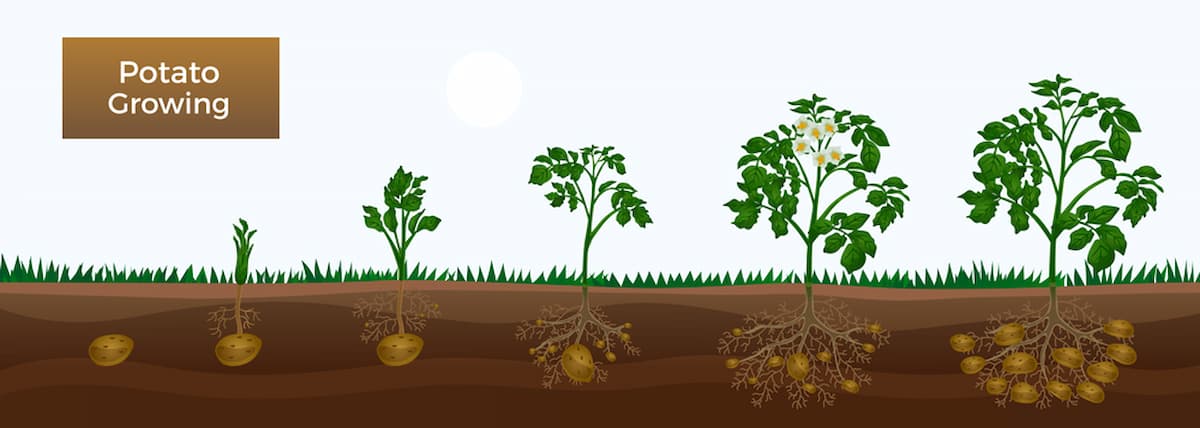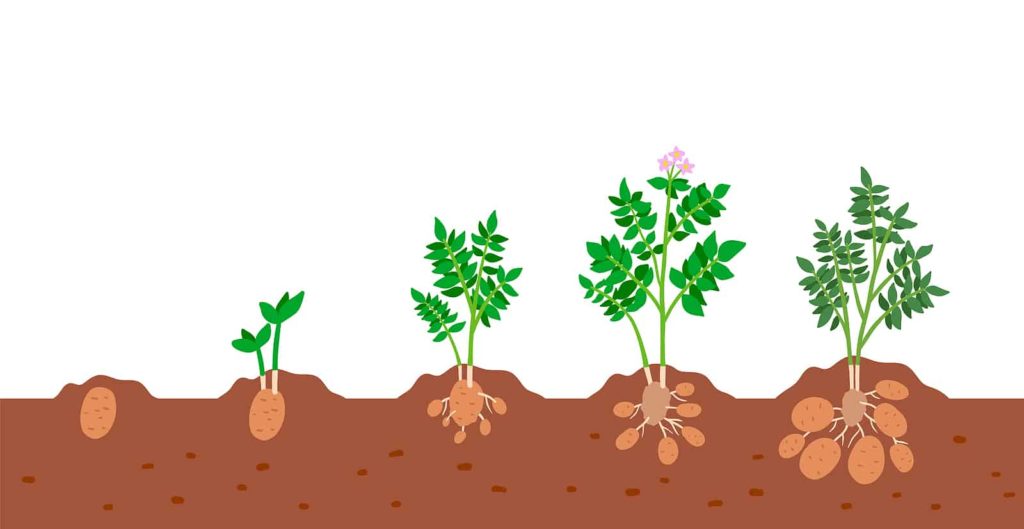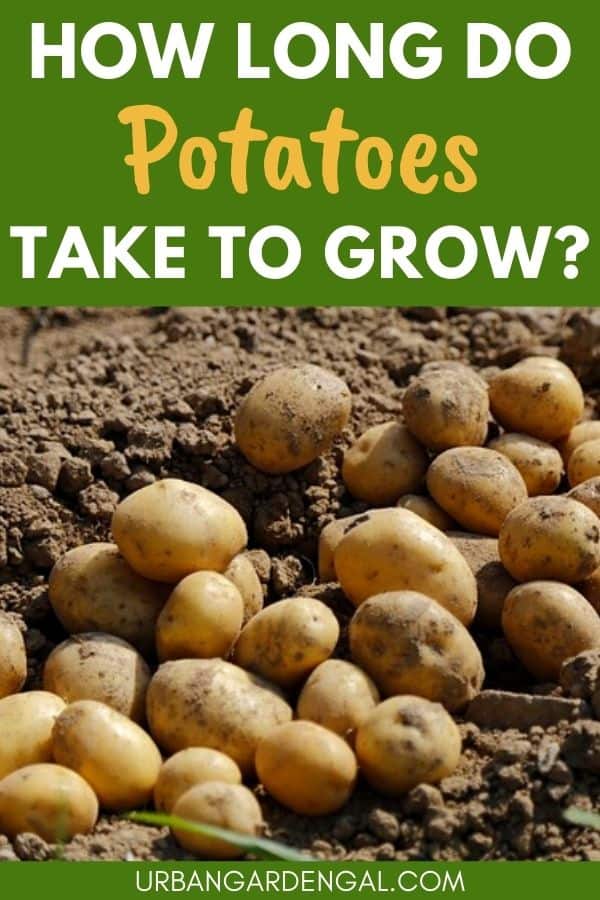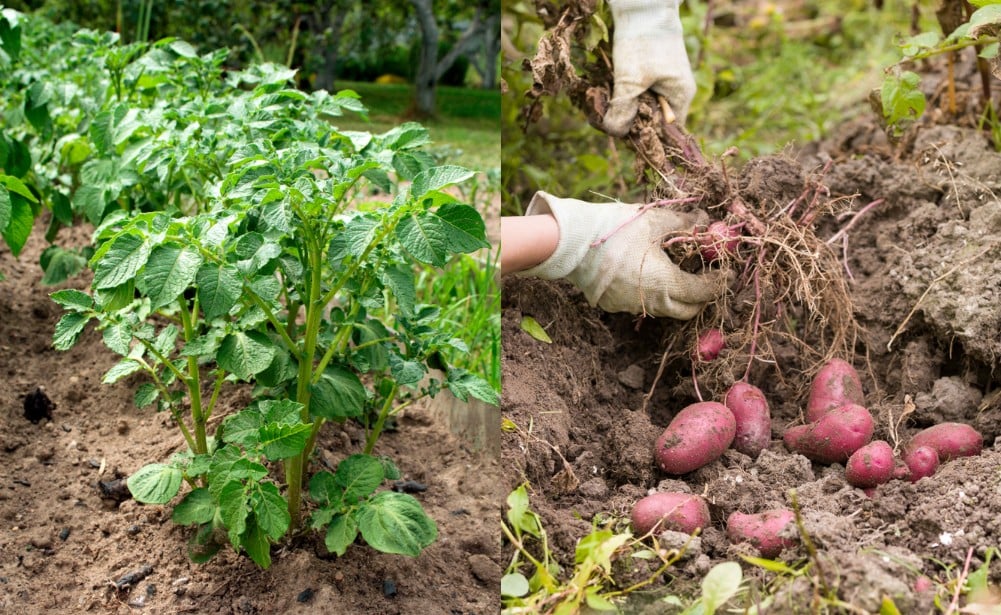Unlocking the Secrets of Potato Growth
Potatoes are one of the most widely cultivated crops globally, and understanding their growth cycle is crucial for achieving a successful harvest. The journey from planting to harvesting potatoes involves several stages, and various factors can influence the growth rate and overall yield. Climate, soil, and variety are among the main factors that impact potato growth, and understanding these elements is essential for optimizing the growth process.
For instance, potatoes require a cool and moist climate to thrive, with ideal temperatures ranging from 40°F to 70°F (4°C to 21°C). The soil should be well-draining and rich in organic matter, with a pH between 4.5 and 7.0. Additionally, selecting the right potato variety for your specific climate and growing conditions is vital, as different varieties have unique characteristics, such as maturation periods, disease resistance, and yield potential.
By grasping the fundamentals of potato growth, you can better appreciate the importance of proper planning, preparation, and care. Whether you’re a seasoned gardener or a beginner, understanding the intricacies of potato growth can help you navigate the challenges and opportunities that come with cultivating this versatile crop. As you embark on your potato-growing journey, you may wonder, how long does it take to grow potatoes? The answer lies in understanding the growth stages and factors that influence the growth rate, which we’ll explore in more detail later.
Choosing the Right Potato Variety for Your Climate
With hundreds of potato varieties to choose from, selecting the right one for your climate and growing conditions is crucial for a successful harvest. Different varieties have unique characteristics, such as maturation periods, disease resistance, and yield potential, which can significantly impact the growth and productivity of your potato crop.
For example, ‘Russet’ potatoes are a popular variety that thrives in cooler climates with well-draining soil. They have a longer maturation period, typically taking around 120 days to mature, but offer high yields and excellent disease resistance. On the other hand, ‘Yukon Gold’ potatoes are a great choice for warmer climates, maturing in as little as 90 days and offering a buttery, yellow flesh.
When selecting a potato variety, consider factors such as your climate, soil type, and desired harvest period. Look for varieties that are resistant to common potato diseases, such as late blight and scab, and offer high yields and good storage potential. By choosing the right variety for your specific growing conditions, you can optimize your potato crop’s growth and productivity, and ultimately, enjoy a bountiful harvest.
Preparing the Soil for Optimal Potato Growth
Soil preparation is a critical step in growing potatoes, as it directly affects the crop’s growth, yield, and overall health. Potatoes require a well-draining, loose soil with a pH between 4.5 and 7.0. A soil pH outside this range can lead to nutrient deficiencies, reduced growth, and increased susceptibility to diseases.
To prepare the soil for planting potatoes, start by testing the pH level and adjusting it if necessary. Add organic matter such as compost or well-rotted manure to improve soil structure, fertility, and drainage. Remove any debris, rocks, and weeds that can compete with the potatoes for water and nutrients.
Potatoes also require a balanced diet of nutrients, including nitrogen, phosphorus, and potassium. Apply a balanced fertilizer according to the manufacturer’s instructions, taking care not to over-fertilize, which can lead to excessive vegetative growth and reduced tuber formation.
Finally, ensure the soil is well-draining and has adequate moisture. Potatoes require consistent moisture, especially during the tuber formation stage. Avoid planting in low-lying areas or where water may collect, as this can lead to rot and other diseases.
Planting Potatoes: A Step-by-Step Guide
Planting potatoes requires careful attention to detail to ensure a healthy and productive crop. Here’s a step-by-step guide to help you get started:
Step 1: Seed Selection – Choose high-quality seed potatoes that are certified disease-free and suitable for your climate and growing conditions. Look for seeds that are firm, smooth, and free of bruises or blemishes.
Step 2: Chitting – Chitting involves allowing the seed potatoes to sprout before planting. This helps to break dormancy and encourages healthy growth. Place the seed potatoes in a light, cool place (around 40°F to 50°F or 4°C to 10°C) for 2-4 weeks, or until short green shoots appear.
Step 3: Planting Depth – Plant the chitted seed potatoes 2-4 inches deep, depending on the variety and soil type. Make sure the “eyes” (the buds from which the new plants will grow) are facing upwards.
Step 4: Planting Spacing – Plant the seed potatoes 12-18 inches apart, depending on the variety and growing conditions. This allows for good air circulation and reduces the risk of disease.
Step 5: Soil Cover – Cover the planted seed potatoes with a layer of soil, and then add a layer of mulch or straw to retain moisture and suppress weeds.
By following these steps, you’ll be well on your way to growing a healthy and productive potato crop. Remember to keep the soil consistently moist during the first few weeks after planting, and to provide support for the plants as they grow. With proper care and attention, you’ll be enjoying your homegrown potatoes in no time.
Understanding the Growth Stages of Potatoes
Potatoes go through several growth stages, from sprouting to maturation. Understanding these stages is crucial for optimal growth and development. Here’s a breakdown of the different growth stages of potatoes:
Sprouting (1-2 weeks): This is the initial stage of growth, where the seed potato begins to sprout. During this stage, the seed potato develops a small green shoot and a few leaves.
Tuber Formation (2-4 weeks): After sprouting, the potato plant begins to form tubers. This stage is critical, as it determines the size and quality of the harvest. During this stage, the plant develops a network of underground stems and roots.
Maturation (4-6 weeks): In this final stage, the tubers mature and the plant prepares for harvest. The leaves and stems begin to yellow and die back, signaling that the tubers are ready to be harvested.
Understanding the growth stages of potatoes is essential for determining when to harvest. By monitoring the growth stages, you can estimate the harvest time and ensure that your potatoes are ready to be dug up. Generally, potatoes are ready to harvest when the tops of the plants begin to yellow and die back. This is usually around 70 to 100 days after planting, depending on the variety and growing conditions.
Factors Affecting Potato Growth Rate
Potato growth rate can be influenced by various factors, including weather conditions, pests, and diseases. Understanding these factors is crucial for promoting healthy growth and maximizing yields. Here are some of the key factors that can impact potato growth rate:
Weather Conditions: Weather conditions, such as temperature, rainfall, and sunlight, can significantly impact potato growth rate. Potatoes require a cool and moist climate to thrive, with ideal temperatures ranging from 40°F to 70°F (4°C to 21°C). Extreme weather conditions, such as drought or excessive rainfall, can slow down growth and reduce yields.
Pests: Pests, such as aphids, whiteflies, and potato beetles, can damage potato plants and reduce growth rates. Regular monitoring and control measures, such as insecticides and crop rotation, can help mitigate pest damage.
Diseases: Diseases, such as late blight and scab, can also impact potato growth rate. Regular monitoring and control measures, such as fungicides and crop rotation, can help prevent disease outbreaks.
Soil Quality: Soil quality can also impact potato growth rate. Potatoes require well-draining, fertile soil with a pH between 4.5 and 7.0. Poor soil quality can lead to reduced growth rates and lower yields.
By understanding these factors and taking steps to mitigate their impact, you can promote healthy growth and maximize yields. Regular monitoring and control measures, such as crop rotation, pest management, and disease control, can help ensure a successful harvest.
How Long Does it Take to Grow Potatoes?
The time it takes to grow potatoes can vary depending on the variety, growing conditions, and climate. Generally, potatoes take around 70 to 100 days to mature from planting to harvest. However, some varieties can take longer or shorter to mature.
Here are some general guidelines for the average days to maturity for different potato varieties:
Early varieties: 70-80 days
Maincrop varieties: 90-100 days
Late varieties: 110-120 days
It’s essential to note that these are general guidelines and the actual time to maturity can vary depending on specific growing conditions. Factors such as weather, soil quality, and pest management can all impact the growth rate of potatoes.
To estimate the harvest time for your specific crop, you can use the following steps:
1. Check the seed packet or consult with the supplier to determine the average days to maturity for your specific variety.
2. Plant the potatoes at the recommended time for your climate and region.
3. Monitor the growth of the plants and watch for signs of maturity, such as yellowing leaves and stems.
4. Use a fork to carefully dig around the plants and check for tubers. If the tubers are the desired size, it’s time to harvest.
By following these steps, you can estimate the harvest time for your potato crop and enjoy a bountiful harvest of delicious, homegrown potatoes.
Harvesting and Storing Your Potato Crop
Harvesting and storing potatoes requires careful attention to detail to ensure a successful crop. Here are some best practices to follow:
Harvesting: Potatoes are ready to harvest when the tops of the plants begin to yellow and die back. Use a fork to carefully dig around the plants, being careful not to damage the tubers. Lift the tubers out of the ground and brush off any excess soil.
Curing: After harvesting, it’s essential to cure the potatoes to heal any wounds and prevent rot. Place the potatoes in a warm, dry place with good ventilation for 2-4 weeks. This will help to dry out the skin and heal any wounds.
Storage: Once the potatoes are cured, they can be stored in a cool, dark place with good ventilation. The ideal storage temperature is between 40°F and 50°F (4°C and 10°C). Make sure the potatoes are not exposed to light, as this can cause them to produce chlorophyll and become toxic.
Long-term Storage: For long-term storage, potatoes can be stored in a root cellar or a cool, dark place with good ventilation. The potatoes should be stored in a breathable container, such as a paper bag or a mesh bag, to allow for airflow. Check on the potatoes regularly to ensure they are not rotting or developing off-flavors.
Enjoying Your Homegrown Potatoes: With proper harvesting and storage, you can enjoy your homegrown potatoes throughout the year. Try boiling, baking, or roasting them for a delicious and nutritious meal. You can also use them in a variety of recipes, such as mashed potatoes, potato salad, or potato soup.


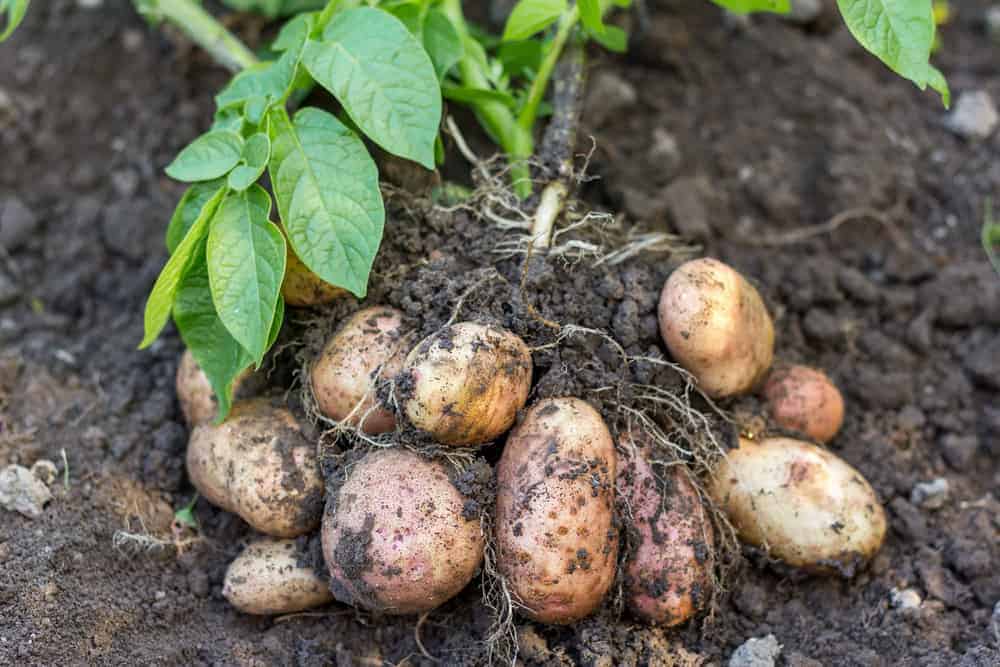
:max_bytes(150000):strip_icc()/growing--potatoes-in-the-home-garden-1403476-05-115b1ba558254b338945592400841b21.jpg)
